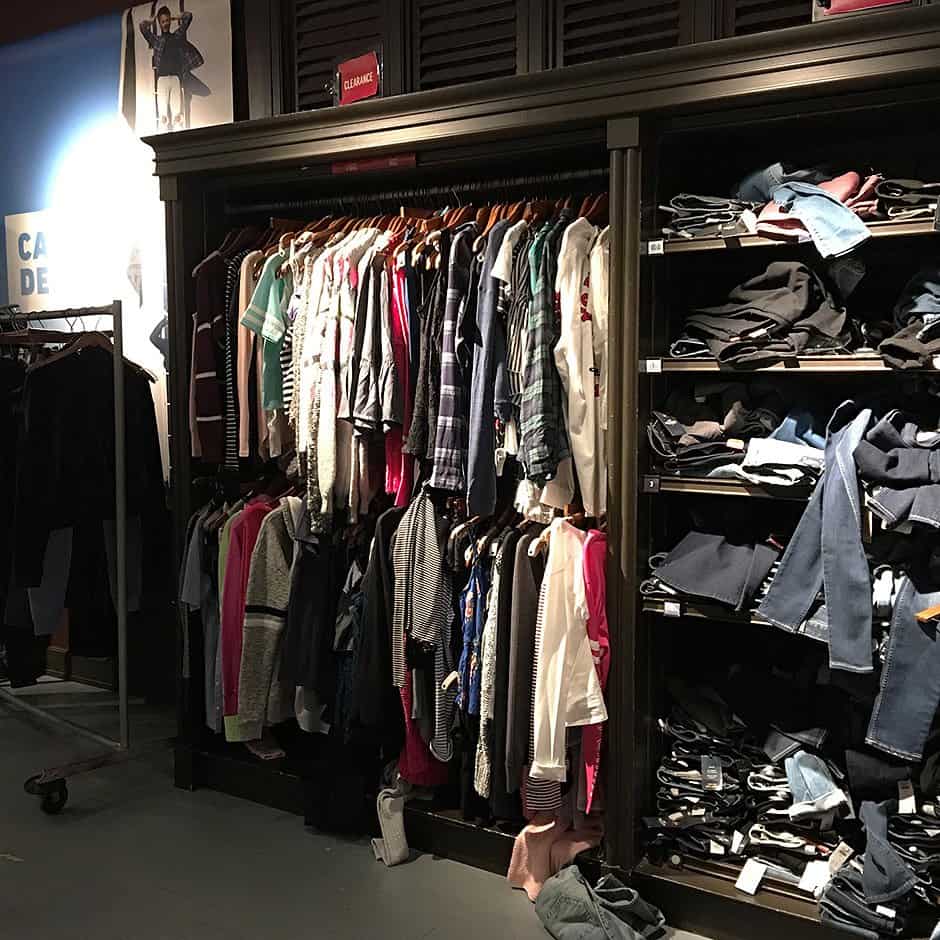8 Reasons Sustainable Fashion Is Nearly Impossible
People are beginning to talk more about sustainable fashion. Many realize that clothing consumption is unsustainable for a healthy planet. As the population grows and higher standards of living are achieved in developing countries, things will only get worse.
Farming, energy, water, air – all encounter negative consequences when clothing is produced. And clothing is being produced at epidemic levels – with millions of pounds of unworn, unused clothing being burned or sent to landfills every year.

The cost to manufacture clothing has become so cheap that corporations and consumers no longer value garments. And they turn a blind eye to the consequences.
Organic fabrics and recycled water bottles are easy to understand solutions, but true sustainable fashion is complex, and if addressed, would disrupt economies.
Let’s look at the 8 unpopular reasons fashion is unsustainable and the potential solutions:
1. We’re Consuming Clothing at an Alarming Rate
According to McKinsey & Company, clothing manufacturing doubled between 2000-2015. The length of time consumers kept clothing decreased by 50% during the same 15 years.
The price of clothing is so cheap, it’s enabling brands to over-manufacture and consumers to over-consume. The price is so low, neither group cares.
Higher prices would slow manufacturing and consumption. Tariffs or consumption taxes would increase prices, reduce consumption, and generate revenue for labor and environmental initiatives. Unfortunately, government involvement would be necessary.
2. Brands Over-manufacture Inventory
Brands forecast what and how much consumers will buy. But forecasting is simply an educated guess. It’s rarely accurate and highly wasteful.
Inventory-based manufacturing is the opposite of on-demand manufacturing (a.k.a. made-to-order). On-demand only makes a product when a consumer requests it, maximizing efficiency and minimizing waste. Therefore, on-demand is true sustainable fashion. Clothing manufacturing volume would be a fraction of what it is today if the industry shifted to on-demand.
3. Shopping as Entertainment
Retail developers group clothing, food, and entertainment into social destinations to maximize the value of foot traffic. Inside these developments, marketers are on the prowl, selling us things we don’t need, just to have something to do socially.
Separate your clothes shopping from your social life. Resist impulse buying. Buy based on needs that fit into an overall clothing plan.
4. Constantly Changing Trends
The fashion industry is designed for constant variety and change, both are required to drive sales. Always-changing trends generate sales but create wardrobes stuffed with rarely-worn clothing – that eventually ends up at Goodwill before going to the landfill.
To minimize wasteful, mistake-prone purchases, develop a plan for what you wear and more importantly, what you don’t wear. A plan less reliant on trends, will help protect you from marketing of the fashion industry.
5. Bad Fits
The reason most garments are never worn is usually because of a small fit issue. The problem is, sizing is designed for businesses, not people. S, M, L, XL are easy to manage in a store, but can’t possibly fit a customer base effectively. Look around at how clothing fits people, it’s not good – and it could be so much better.
Find and support a brand that values fit and fits you well.
6. Brands Take Advantage of Poor Countries
Brands want products made cheap. They have leverage over factories and apply impossible pressure to reduce prices. To survive, factories find a way to meet the price; the workers and the environment pay the price.
Labor and environmental laws in poor countries are loosely enforced, if at all. Poor countries don’t have the infrastructure or expertise to police how industry treats their environment or their people.
People in every country have the right to work. But if the work damages their health and dignity, is the work worth it? Do your best to judge the values of the brands you support.
7. Customers Demand Discounts
Making a product responsibly and sustainable costs money. If the price is low, it’s not responsible or sustainable – regardless of what the marketing material claims.
Many consumers refuse to buy clothing unless it’s on sale. But consumers can’t expect discounted prices and responsibly made, sustainable fashion. Consumers who care about labor and environmental issues must be willing to accept higher prices from responsible brands that manufacture sustainably.
8. Big Corporations Appetite for Growth
The fashion industry is over saturated with clothing, yet corporations have unhealthy appetites for top-line growth. Making many more garments than the world’s population could ever need.

Significant change will need to come from regulation because corporations won’t self-regulate. Governments must begin studying sustainable fashion and how regulation could better balance supply and demand.
Until then, consumers can help by withdrawing support from brands they believe only focus on selling goods – at any cost.
All 8 points listed above run counter to how corporate fashion operates. Addressing any of these would be unpopular. Corporate fashion will talk about sustainable fashion practices like organic fabrics, less water usage, energy-efficient factories – all positive, but all of which should be happening anyway. Let’s start the conversation about the real problems.
If you have thoughts or opinions about this story, we’d like to hear from you. Please reach out to us at support@toddshelton.com.
